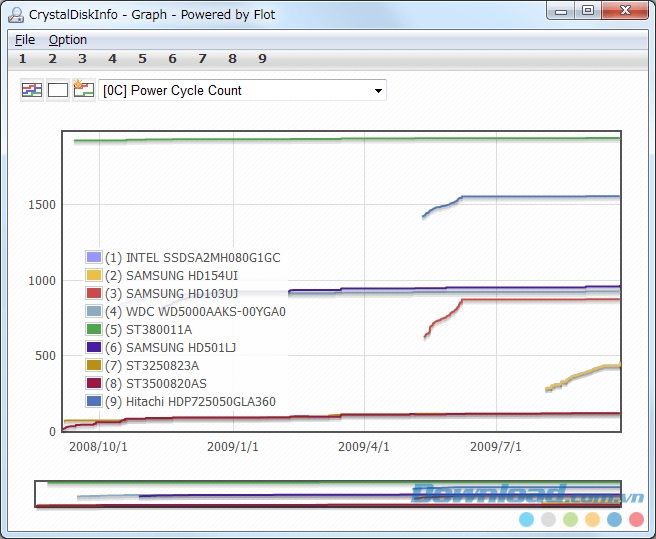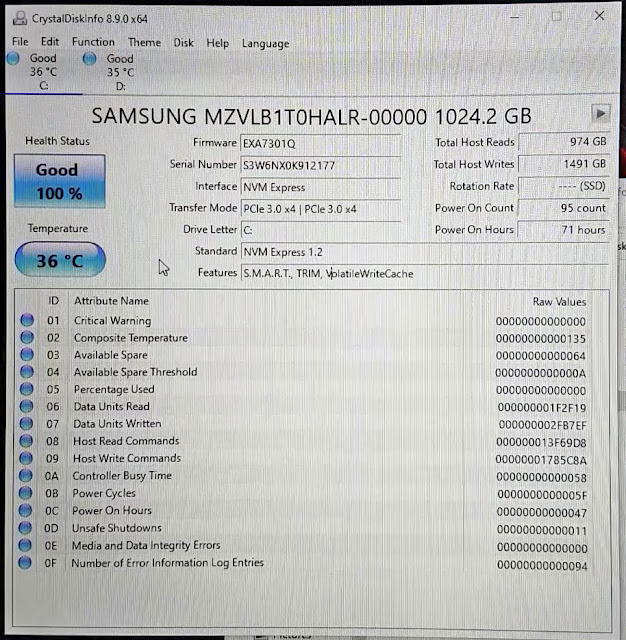

- #Interpreting crystaldiskinfo results how to
- #Interpreting crystaldiskinfo results windows 10
- #Interpreting crystaldiskinfo results windows
In this section, we are going to share how to use the CrystalDiskMark to test the performance of your solid-state drive. It will be able to display the benchmark results in megabytes/second (MB/s) and Input/Output Operations Per Second (IOPS), which is useful information that you are able to use to know the action of your new drive, or to check if your old drive is losing a performance. It is a known tool that offers you to do a number of tests to measure the reads and writes speeds of any kind of drive.ĬristalDiskMark is able to run sequential and random read and write tests.
#Interpreting crystaldiskinfo results windows
Although you will discover a bunch of tools out there, on Windows 10, you are able to use CrystalDiskMark. Once you get a new device, or you are upgrading an existing hard drive (HDD) or solid-state drive (SSD), it is a good idea to test their performance to make sure the drive is working as advertised.
#Interpreting crystaldiskinfo results windows 10
HOW TO CHECK DRIVE READ AND WRITE PERFORMANCE ON WINDOWS 10

For your information, the raw value has different structure for different vendors and is frequently not meaningful as a decimal number. Some failures are able to be due to some factors such as damage to a server, or thermal widening of your hard disk. If there is a partial failure in the mechanical positioning system, then seek errors are going to arise. Seek Error Rate: This is rate of seek errors of the magnetic heads.However, the function of this attribute is not specified.

Read Channel Margin: This is Margin of a channel while reading data.The raw value represents a count of the bad sectors which have been found and remapped. Reallocated Sectors Count: This is a count of reallocated sectors.Start/Stop Count: This is a tally of spindle start or stop cycles.Spin-Up Time: This is an average time of spindle spin up, from zero RPM to fully operational.If the value of this attribute is decreasing, so there is a high probability that there is an issue with your disk. Throughput Performance: Overall throughput action of a hard disk drive.Read Error Rate: It saves data regarding the rate of hardware read errors which occurred once you are reading data from a disk surface.In the text below, you are able to see a list of some S.M.A.R.T. Drives may utilize different codes for the same parameter. Some codes are specific to particular drive types. Drives do not support all attribute code/ID (Identifier). The Manufacturers do not need to agree on precise attribute definitions and measurement units, the list of attributes is only a guide. Usually, normalized values are mapped so that the higher values are better, but higher raw attribute values can be better or worse depending on the attribute and manufacturer. There are some SMART attributes and the meaning of their raw values. The Manufacturers have already caary out at least one SMART attribute in some products including Samsung, Fujitsu, Toshiba, Intel, Seagate, Hitachi, Maxtor, sTec, and Western Digital. The initial default value of attributes is 100 however is able to vary between manufacturer. Each attribute has a raw value which is able to be a decimal/ hexadecimal value. It sets the values beyond attributes should not pass under normal operation. Usually, each drive manufacturer assigns a set of attributes. For a list of various programs which allow reading of SMART. Actually, to read CrystalDiskInfo results, firstly you need to learn all about SMART (Self-Monitoring, Analysis and Reporting Technology). Other features include e-mail and sound warnings, AAM/APM adjustment and Intel RAID support.Īpparently, there are some people who reported that they do not know how to read CrystalDiskInfo results. Similar with CrystalDiskMark, this CrystalDiskInfo is specially designed with an emphasis around Solid State devices that supporting NVMe connections in addition to the usual SATA and PATA. CrystalDiskInfo is an MIT licensed SMART (Self-Monitoring, Analysis and Reporting Technology) utility for reading and monitoring Disk Drive status.


 0 kommentar(er)
0 kommentar(er)
